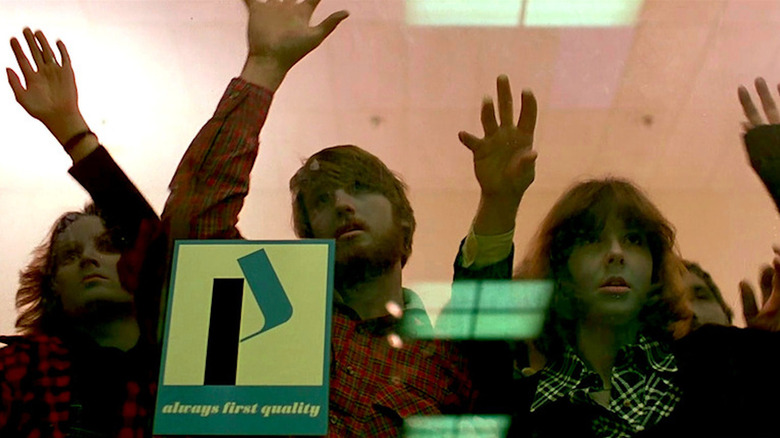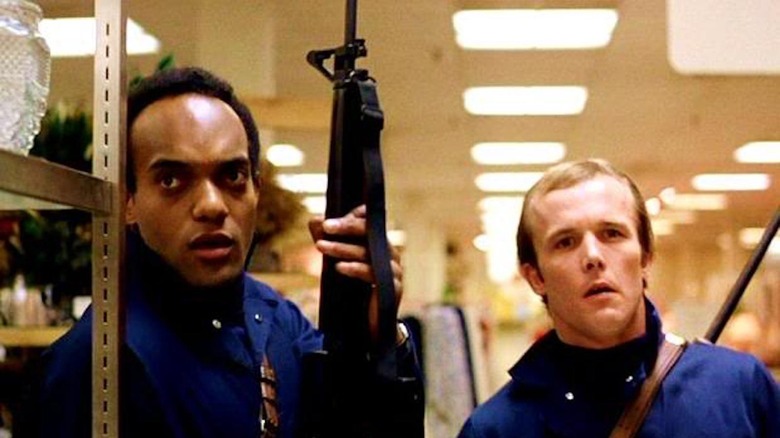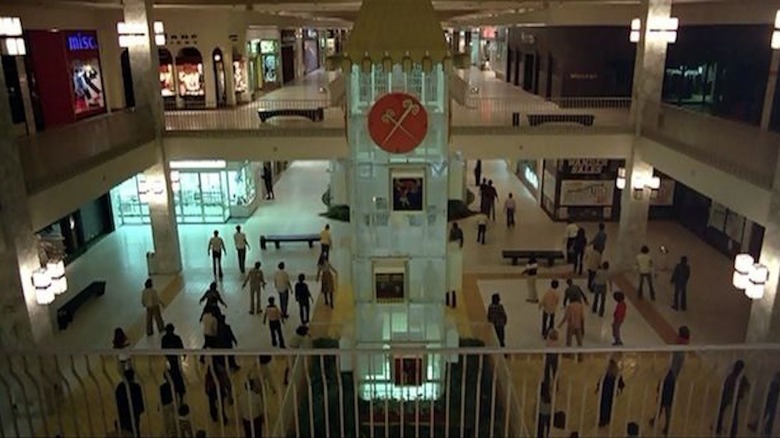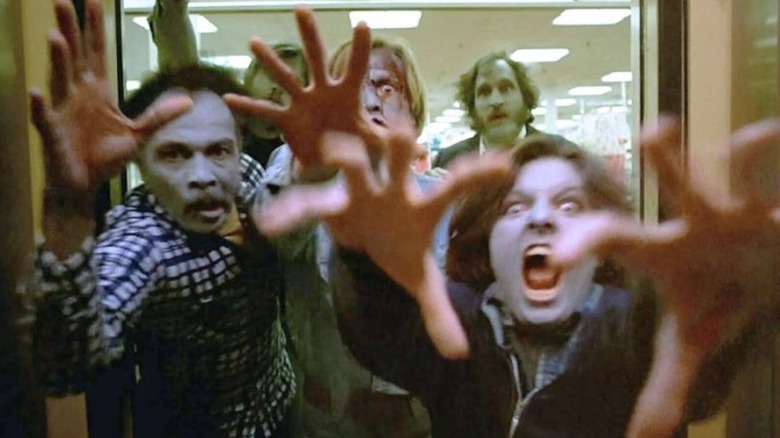A Guide To Every Version Of Dawn Of The Dead
We may receive a commission on purchases made from links.
Whenever a film exists in a variety of versions, it's a good bet there's a juicy behind-the-scenes story of an uncompromising director battling with a cabal of bottom-line-obsessed producers hellbent on transforming the surly artist's work into a product with broad commercial appeal. Given George A. Romero's agonizing history of Hollywood heartbreak, you'd expect "Dawn of the Dead," which exists in three distinctively different versions, to be one of those tumultuous tales. But while the filmmaker certainly had a rough go of it with censors in just about every country that exhibited his movie, this isn't a "Brazil" situation, where the studio attempted to travesty a dystopian sci-fi classic with an audience-friendly theatrical cut. On the contrary, "Dawn of the Dead" is a fascinating case of a brilliant director crafting a malleable masterpiece that works as a stingingly funny satire and/or a relentlessly terrifying siege flick.
In light of the film's rights-related absence from streaming platforms, most first-time viewers are forced to either blind-buy the Blu-ray or borrow the set from a friend. Once they acquire the goods, they're confronted with three versions: the theatrical cut (129 minutes), the "director's cut" (139 minutes) and the European cut (119 minutes). What are the differences, and which is the definitive version? Let's examine each version, and see where we end up.
The Extended Cannes Cut (aka Director's Cut)
This is Romero's rushed, warts-and-all assemblage for the 1978 Cannes Film Festival market, where "Dawn of the Dead" screened for the first time. For a rough cut, it's remarkably coherent and downright compelling. An early scene where Stephen (David Emge) and Fran (Gaylen Ross) get accosted by a marauding group of cops (led by "Day of the Dead" heavy Joe Pilato) adds an essential degree of human tension prior to our heroes' escape to an abandoned shopping mall. It's here we learn the zombie apocalypse favors the ruthless. If not for the timely arrival of SWAT team colleagues Roger (Scott Reiniger) and Peter (Ken Foree), Stephen might've been pressed into helicoptering these scoundrels to safety. In the theatrical cut, this encounter is totally innocuous.
This is an embarrassing confession as a Romero fanatic, but for close to a decade after its DVD release, the Cannes version was my preferred cut. I'd grown so familiar with the film's central quartet throughout countless childhood viewings of the theatrical release that I savored the extra time spent with these characters, especially the doomed duo of Stephen and Roger. This allowed me to excuse its overall chunkiness, where basic elements like transitions and establishing shots play a beat too long. These are the moments that invariably get tightened up throughout post-production.
It wasn't until I revisited the theatrical cut at some point in my 30s that I realized how horribly I'd missed the Goblin score. It's a testament to Romero's ear for library (i.e. public domain) music that the film works just fine without the prog rock band's sonic contributions. But once you reacquaint yourself with their score in either of the other cuts, it's hard to watch "Dawn of the Dead" any other way.
The European Version (aka The Argento Cut)
If you want to see how the excision of 10 minutes can radically transform a movie, compare Argento's "Dawn of the Dead" cut to the theatrical version. The film's overtly satirical framework is still in place, but comedic bits and laugh lines have largely been jettisoned. Argento cuts way back on the quartet's play time in the zombie-free mall, which, while quickening the pace (and his version really freakin' moves), shortchanges Emge and Reiniger's performances. We never completely fall in love with these characters, which, to a certain extent, leaves this feeling bloodless and more than a little like a close approximation of a studio cut.
On the extreme plus side, Argento's version is fully scored by Goblin. They don't quite hit the delirious heights of "Deep Red" and "Suspiria," but that's only because Romero lacked Argento's visual dynamism. The two filmmakers adored each other's work, but, aesthetically, they couldn't have been more different. Argento wanted you to dream; Romero urged you to think ... and despair.
The U.S. Theatrical Version
Released in the United States seven months after the premiere of Argento's European cut, this is Romero's preferred take on "Dawn of the Dead." It's as seamless a piece of filmmaking as the Pittsburgh auteur ever delivered, tightening up the slack of the Cannes cut, while interpolating the best parts of Goblin's music into his library score (and, most crucially, restoring the jarringly goofy Muzak end credits cue). The mall romps have been restored in full, which means we get to fall in love with Roger's cowboy antics all over again. Meanwhile, Stephen and Fran are afforded a crucial sliver of space to resonate as more than a stock romantic couple.
Romero gets the pacing precisely right here. He cuts around two minutes back into the pre-mall segment of the first act, which provides necessary texture to his depiction of societal collapse (particularly the rednecks' far-too-eager massacring of zombies). The film breathes, but it never dawdles. There are frayed ends and technical glitches, but this handmade quality imbues the movie with a stark matter-of-factness that disconcertingly syncs up with the zombie installments on either side of it. "Dawn of the Dead" isn't just relatable; it's believable. 44 years on, it's the ne plus ultra of zombie flicks not for its consumerist satire or virtuosic Tom Savini gore, but because it's a startlingly sharp mirror image of the monsters we've always been and, it appears, always will be.



